The Surprising Practice of Binding Old Books With Scraps of Even Older Books
For centuries, bookbinders commonly used whatever materials they could get—including entire manuscript pages.
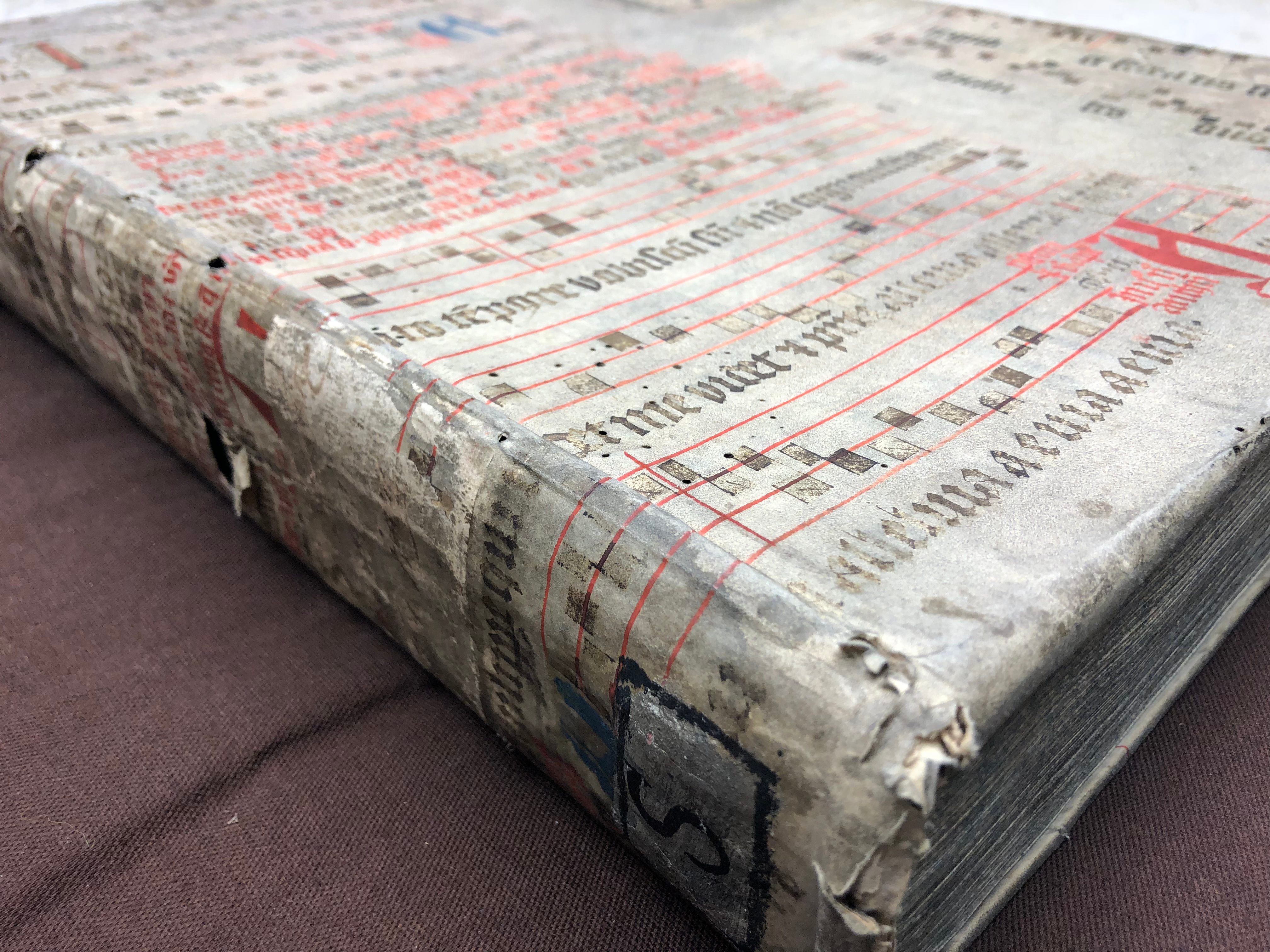
Last year, Megan Heffernan, an English professor at DePaul University, was at the Folger Shakespeare Library and studying a folio of John Donne’s sermons printed in 1640. When she opened it up, she was surprised to find that the inside of the front and back covers were plastered with sheets taken from a book of English psalms. “I just thought, ‘How amazing is it to think about sermons sort of spending eternity rubbing up against a totally different kind of liturgical writing?’” she says. The texts’ creators didn’t intend for them to live together, but when the psalms became “book waste”—essentially, printed garbage—they could end up anywhere.
Suzanne Karr Schmidt, a curator of rare books and manuscripts at the Newberry Library in Chicago, jokingly describes these as “turducken books”—a book (or manuscript) within a book within a book. Repurposed scraps like these show up in several dozen places in the library’s collection, either as bindings, mends, or pieces used to reinforce spines.
From the earliest days of bookmaking, binders made use of scraps. Sometimes, it was just mundane material: leases or contracts that had expired or been rendered moot by a scribe’s mistake. In other cases, the bindings illustrate some seismic cultural shift. In these instances, the materials indicate to modern scholars what was important to the people assembling books—or, conversely, what had little or no value to them.
After the Reformation, for example, when Catholicism gave way to Protestantism in Britain, monastic libraries were dissolved and centuries’ worth of manuscripts were suddenly homeless and largely unwanted. This made them “available to a burgeoning print trade,” Heffernan says, “and they could be torn up into strips, or wrapped whole around books.” The change of faith sapped the Catholic materials’ “value as documents to be read,” she says. But their value as raw material—such as vellum, made from animal skin—remained.
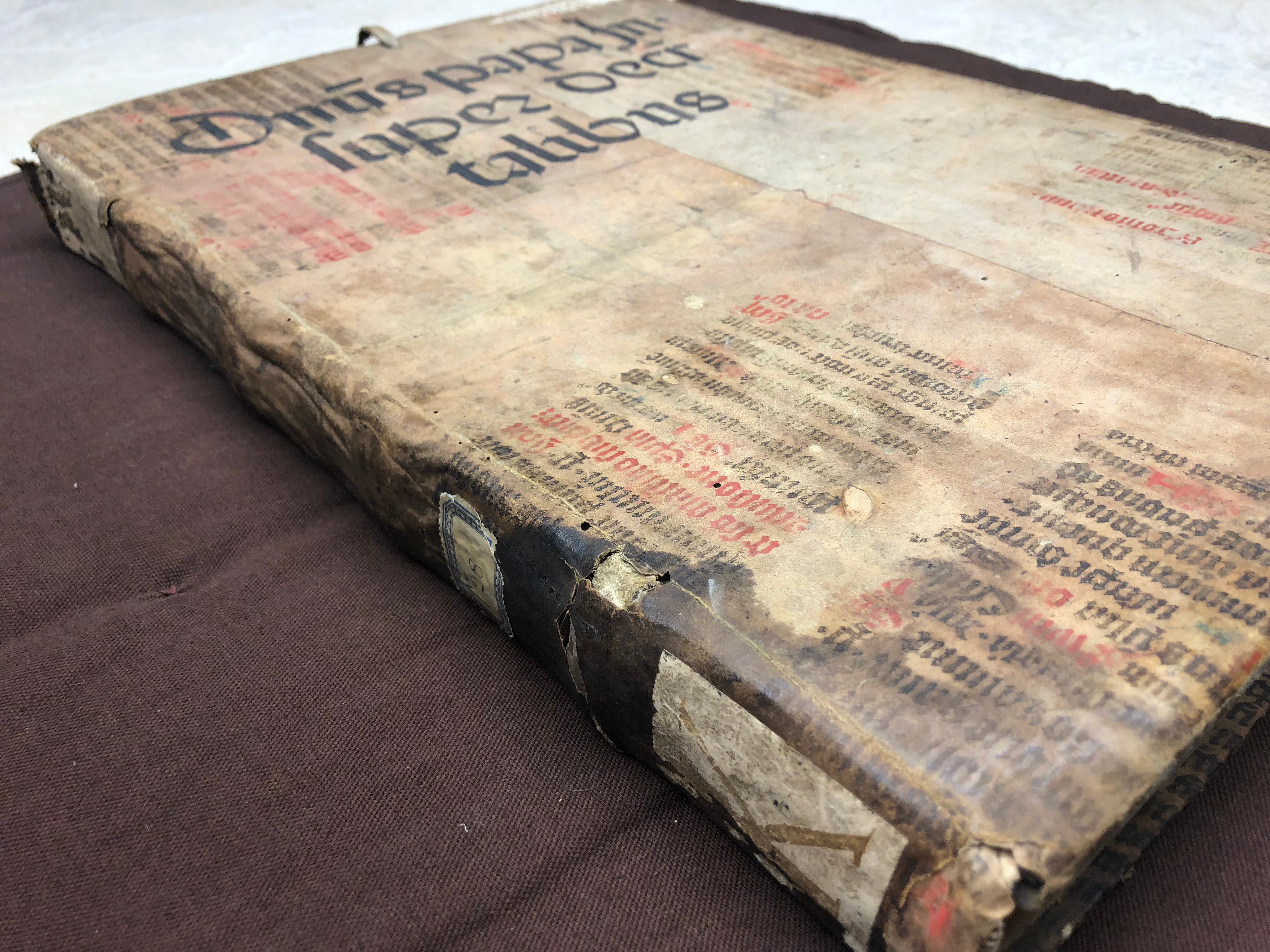
Stumbling across one of these hybrid items now feels kind of magical—as if geography and time have collapsed into your hands. But repurposing scraps in this way wasn’t at all unusual at the time, and Heffernan suspects that it wouldn’t have made much of a difference to readers. “To us, the manuscripts that have been wrapped around books are signs of destruction,” Heffernan says. But to early modern readers, slicing and dicing a text was just a strategy for taking care of other, more coveted objects—like wrapping a textbook in brown paper today. Oversized choir books, which could be twice as tall as a folio, went a long way: “Not quite half a cow,” Schmidt says, “but still a substantial piece of leather.” It was simple practicality. “It’s a moment of typical practice for 16th- and 17th-century bookbinders that seems utterly, delightfully weird to us,” Heffernan says.
Some of this printed waste can end up inside a book’s spine or some other hidden spot, but the rest of the material is not especially hard to notice. It can be unsubtle, pasted in haphazardly or upside down in a newer volume. “The hard part,” Heffernan says, “is figuring out where it comes from.”
To solve that puzzle, scholars run any legible writing through databases such as Fragmentarium or Early English Books Online, a searchable collection of 125,000 titles printed between the late 1400s and early 1700s. “That gets tricky, because you’re working with part of a page, maybe,” Heffernan says, and it doesn’t necessarily indicate which edition you’re looking at. By studying the letters themselves, paleographers looking at medieval manuscripts can guess about time period, and maybe even identify scribes by style or their initials. In some cases they can learn even more from a sister leaf in another collection. In books that were printed instead of written, the printing itself can be a clue. Many of Gutenberg’s printings, for instance, can be distinguished by layout or type.
With two collaborators—Anna Reynolds from the University of York and Adam Smyth of the University of Oxford—Heffernan is in the early stages of building a database for the express purpose of triangulating these relationships. They’re also planning a conference for next summer. “We want it to be multidisciplinary,” Heffernan says. “That’s what this work is.” The three collaborators are literary studies scholars, but the work could also be interesting to book historians, those in the library sciences, and people from natural history archives and museums, where book waste was also used to line boxes or seed packets.

Generally speaking, waste material doesn’t add or detract from a book’s value, says Sunday Steinkirchner, a rare book dealer in New York. The practice was common until bookbinding became standardized in the 19th century, she says, and publishing houses often grabbed whatever they had on hand. She has a copy of Charles Dickens’s Bleak House lined with contemporary advertisements. Other books from the period may have been made with older maps or printing errors. For waste material to bump up the appraisal, she says, “it would have to be really exceptional material … something really unusual or atypical, or something perhaps linked to a well-known author.”
In these rare cases, where the “waste” material outclasses the text it was used to sheathe, it may be carefully disbound. That was the case with a book that a trustee gifted to the Newberry in 2003. A 15th-century volume by Sebastião Barradas, a Portuguese preacher, had caught his eye on eBay, and he decided to buy it—partly because no other American library had one, and partly because he glimpsed another manuscript beneath the binding, and wanted a closer look.
When the library’s conservators carefully separated the binding, they looked for evidence in the alignment and content of the words. “Because the script was aerated—i.e, the individual words were not fully separated—the volume it came from surely dated from before the end of the 10th century, after which spaces between words were introduced,” the library noted in a catalog. After collaborating with paleographers to date the script and decipher the text, the staff concluded that the binding consisted of fragments of sermons attributed to Saint Augustine, printed in 10th-century Switzerland. The binding and the “host” text continue to be stored separately. “Clearly, a 10th-century folio text manuscript fragment, almost a full sheet, is of more interest, being a greater rarity, than a printed book,” Schmidt says.
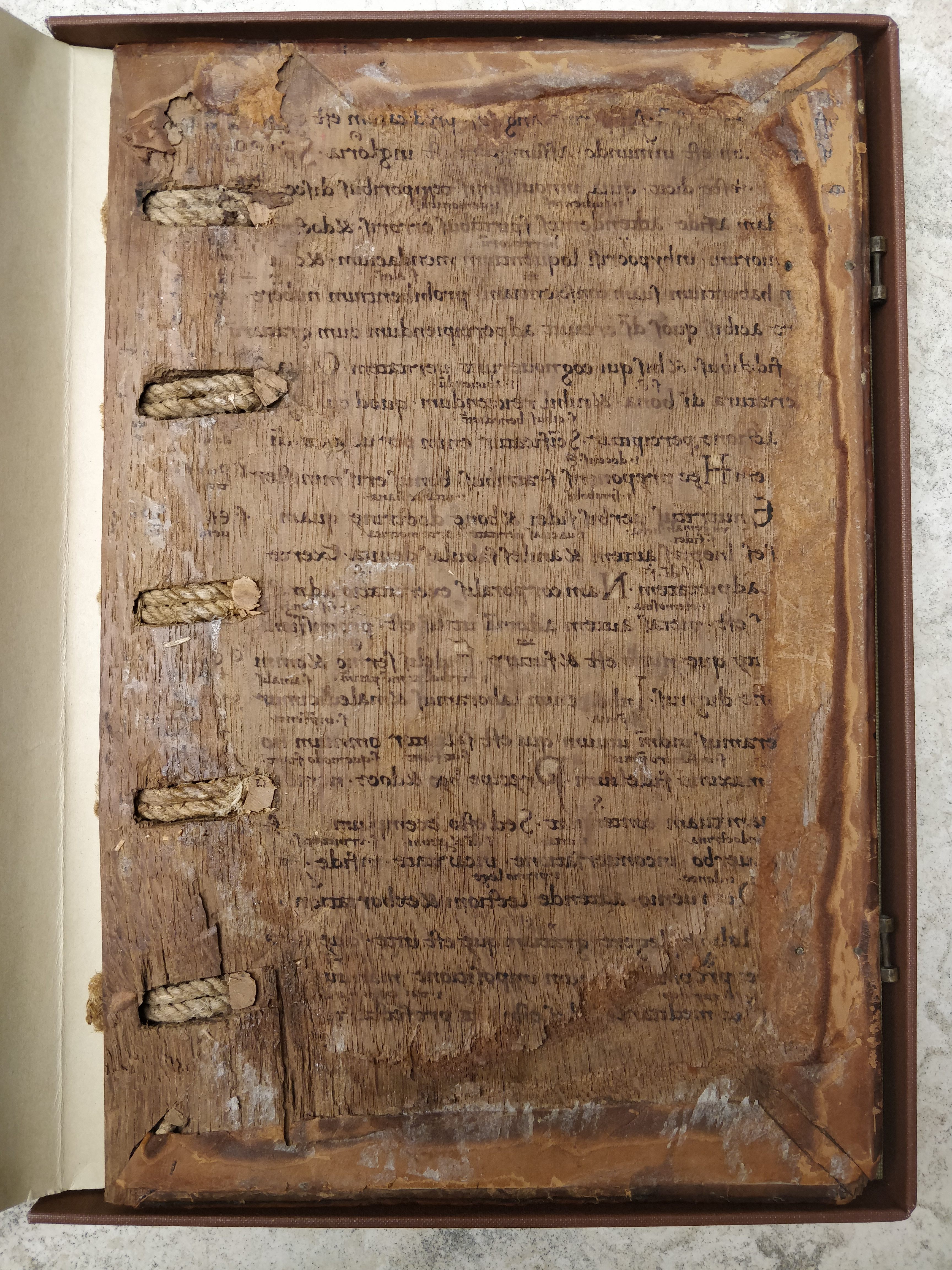
Disbinding printed materials to study their composite parts is a relatively new pursuit, but people have been carving these kinds of books up for years, with other motives. “Across the 19th and 20th century, these hybrids—manuscript and print, or different kinds of print—were disbound not to study the waste, but to make early modern books look like what Victorians expected,” Heffernan says. That’s why so many shelves in rare book rooms have books that seem to look more or less the same. “Everything is bound in a shiny red cover with gold pages, but that’s a 19th-century reimagining of what 16th- and 17th-century books looked like.” Marbled endpapers and gilded edges are additional tells that a book was rebound in the 19th century, she says.
These days, the goal is to protect and preserve everything—both the binding and the book around which it’s wrapped, Heffernan says. “It’s possible that they could be wearing each other out as these different materials rub against each other across centuries.” Over time, the brilliant colors from reused illuminated manuscripts might bleed onto the printed books or the wooden book board—which is what happened with a Carolingian text from the Vulgate, the Latin version of the Bible approved by the Council of Trent. Understanding the materials that go into bindings help conservators and librarians be dutiful custodians.
For researchers, thinking about the content book waste—as an archaeological material—is a way to reconstruct the routes that objects and ideas traced from place to place. “If sheet A is wrapped around book X, and sheet B around book Y, you could assume that at some point, they had been close to each other,” Heffernan says. It’s a path from shelf to shelf, city to city, century to century, that’s been largely unwalked. Printed waste, Schmidt says, “seems like a frontier, where there’s still discoveries to be made.”

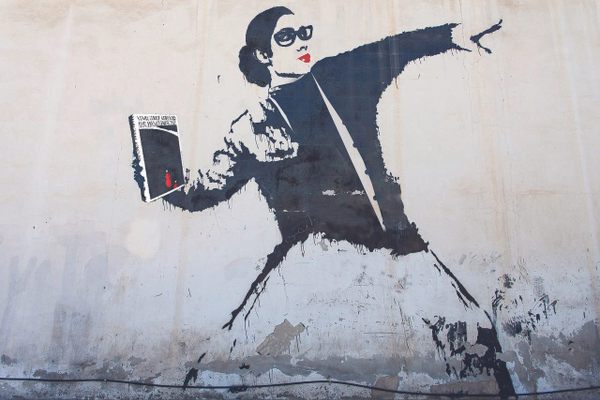

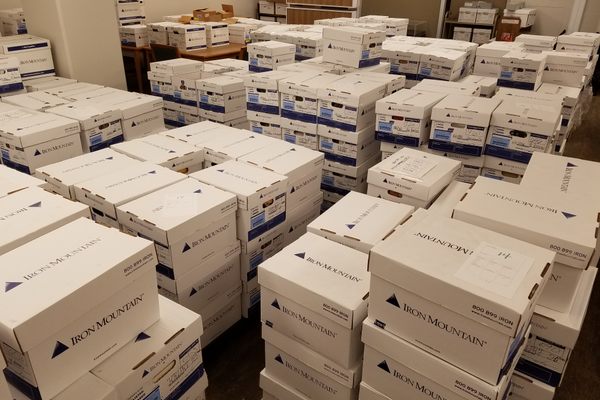











Follow us on Twitter to get the latest on the world's hidden wonders.
Like us on Facebook to get the latest on the world's hidden wonders.
Follow us on Twitter Like us on Facebook